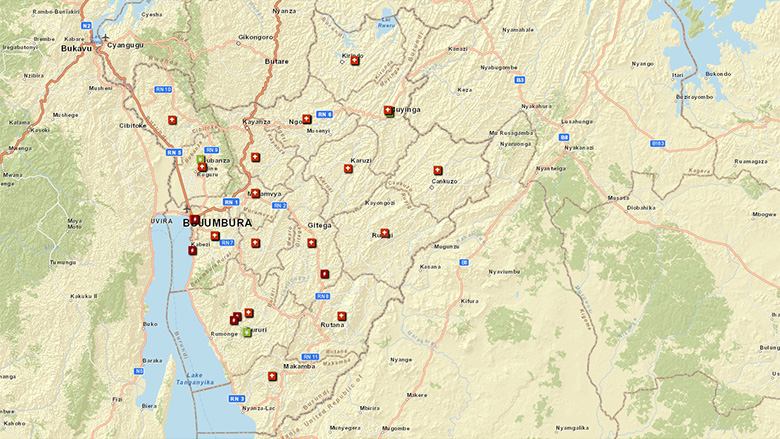Challenge
With a per capita gross income of $380, Burundi is one of the poorest countries in the world, with individuals spending less than $49 on health per year. A 2007 survey showed HIV presence in the general population at 3 percent and among commercial sex workers at 38 percent, as well as a rapid increase in prevalence in rural areas. Causes of the epidemic include commercial sex work, widespread presence of multiple concurrent partnerships, and low rates of male circumcision. Implementation of Burundi’s 2002-2006 National HIV/AIDs Strategy (NHAS) was constrained by a host of institutional, technical, financial, and capacity-related issues, the lessons of which were used to develop a second NHAS. IDA was needed to provide strategic guidance, lessons learned, and technical assistance to the second NHAS, and to ensure synergy between health system strengthening and HIV/AIDS interventions. Finally, the government has advocated the importance of IDA’s continued support to civil society through subprojects and capacity building activities.
Solution
- The project set out to “increase the utilization of a selected set of preventive services, among groups highly vulnerable to, or affected by HIV/AIDS.” Commercial sex workers, Burundians aged 15-49 with multiple sex partners in the past year, and pregnant women with HIV were all targeted by the project
- Number and value of subprojects targeting vulnerable populations and high risk groups
- Percentage and number of people with advanced HIV receiving antiretroviral therapy
- Number of pregnant women with HIV who received antiretroviral therapy to prevent mother-to-child transmission (PMTCT)
- Number of persons living with HIV/AIDS reached through small grant activities
Number of public sector organizations with HIV control-related activities as part of their annual plans or sector strategies.
To achieve these goals, the project financed behavior change activities in a range of organizations, with support for preventing PMTCT and for male circumcision through direct transfers to the Ministry of Health (MoH). The project also supported the expansion of antiretroviral (ARV) treatment with the use of performance based contracting managed by the MoH. Small grants were provided to vulnerable families and HIV/AIDS activities were supported in key ministries and local governments.
Results
- HIV prevalence among commercial sex workers (CSWs) decreased from 37.7 to 19.8 percent.
- Nationwide HIV prevalence decreased from 3 to 1.4 percent, even as treatment with ARVs more than doubled.
- The number of people on antiretroviral therapy increased from 10,928 to 25,117.
- The percentage of HIV-infected pregnant women who received a completed antiretroviral treatment to reduce risk of mother-to-child transmission increased from 6 to 32 percent.
- Condom use rate among female commercial sex workers increased from 82 to 91.2 percent.
- The percentage of Burundians aged 15-49 with more than one sexual partner in the past year who reported using a condom during their last sexual intercourse increased from:
o Men: 6 to 13.9 percent
o Women: 10.9 to 14.3 percent. - A total of 272 CSW peer educators were trained in the prevention of Sexually Transmitted Infections. Approximately 4,426,322 male condoms and 28,573 female condoms were distributed.
- A total of 169 CSWs and 189 security officers were educated on the rights of CSWs.
- A total of 5,292 CSWs underwent HIV testing and know their results.
Bank Group Contribution
This project was funded by an IDA grant, which disbursed over $9.0 million, and supported 247 activities, reaching an estimated 94,763 Burundians.
Partners
Population Services International and the Conseil National de Lutte contre le SIDA (CNLS) served as implementation partners for this project.
Moving Forward
The government continues to pay for HIV related services since the closing of the project with support from the Health Sector Development Support Project, PRIDE, the European Union, and the Belgian development agency. The Executive Secretariat for the National HIV/AIDS Council will be restructured, focusing on re-organization and staffing
Beneficiaries
Cecile 25, who started sex work at the age of 13, was able to give up sex work and start a palm oil business using a grant from this project. “With 2000 Burundi francs ($1.50), I’m able to pay my daily food ration,” says Cecile, who is HIV-negative and glad that she no longer has to go from pub to pub in search of clients. Jeanne, another of the country’s 14,000 female sex workers says, “We have been sensitized by watching movies showing that HIV/AIDS kills and we were given condoms to protect ourselves against sexually transmitted infections.”

